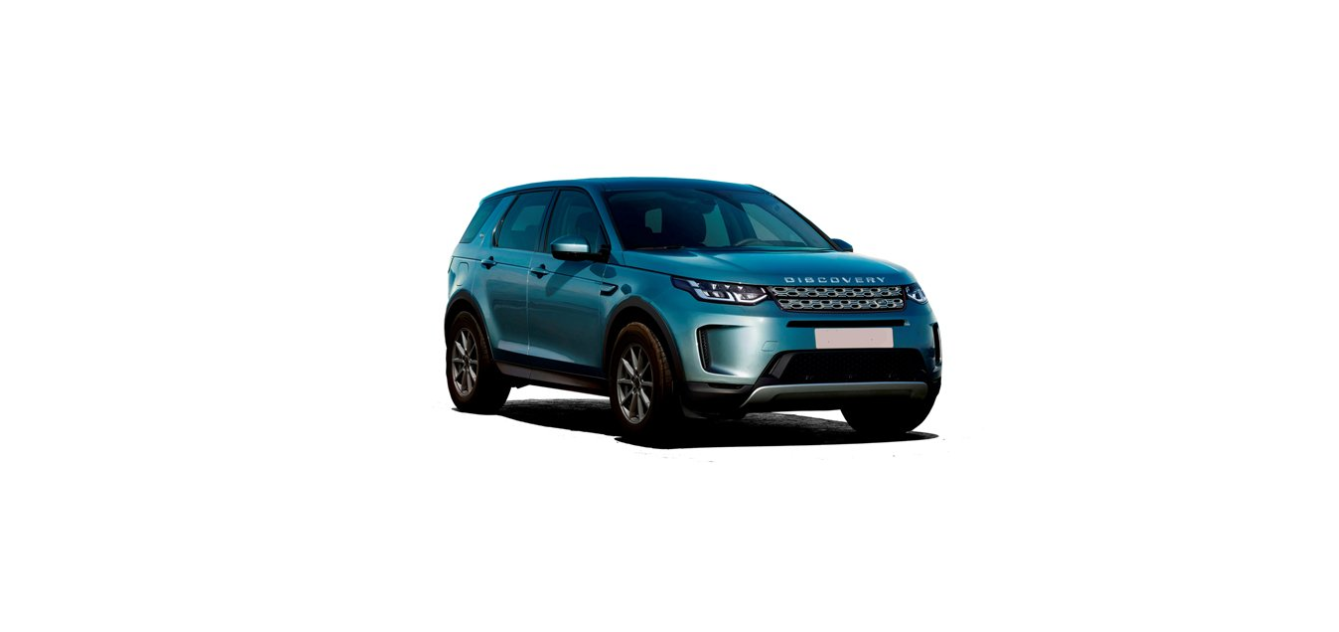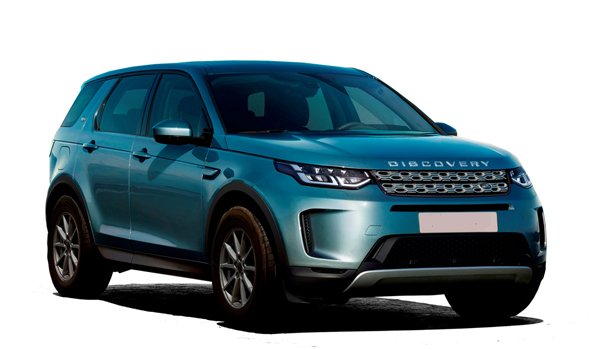2022 Land Rover Discovery Sport Driving Programs Owners Manual




2022 Land Rover Discovery Sport Driving Programs


TERRAIN RESPONSE OVERVIEW
Terrain response comprises a number of different driving programs that can be selected to suit the current terrain, driving conditions, or driving style.
Each driving program alters various vehicle settings, including engine speed, and the amount of steering effort required.
The following driving programs are available:
See COMFORT.
See GRASS GRAVEL SNOW.
See MUD RUTS.
See SAND.
See ECO.
See DYNAMIC.
See AUTO.
Depending on the specification of the vehicle, either the comfort or AUTO driving program is automatically selected when the vehicle’s ignition is switched on.
To view additional information on the selected driving program:
- Touch the apps icon on the touchscreen driver side bar. See TOUCHSCREEN HOME MENU.
- Select 4x4i.
- Select TR INFO.
Terrain response works in conjunction with the Hill Descent Control (HDC) and Dynamic Stability Control (DSC) systems to further enhance the vehicle’s capabilities. See DRIVER OVERRIDE OPTIONS.
TERRAIN RESPONSE OPERATION
Do not become distracted by the terrain response system while the vehicle is moving. Driver distraction could result in an accident, leading to serious injury or death.
To select a terrain response driving program:
- Touch the terrain response icon.
- Rotate the driver’s-side heater control to select an appropriate driving program. The icon for the selected driving program illuminates. NOTES
The driver’s-side heater control automatically returns to being a climate and comfort control after a period of non-use.
The touchscreen displays a confirmation message and the appropriate icon for the selected driving program. The instrument panel also displays the same icon.
The driving program icon flashes if a program change is requested, but the change is inhibited due to Dynamic Stability Control (DSC) being active. The selection takes place once DSC is inactive.
COMFORT
Select the comfort driving program when driving on-road and on surfaces which are similar to a hard road surface. For example, dry cobbles and dry wooden planks.
Select the comfort driving program when the need for any other terrain response driving program has passed.
Hill Descent Control (HDC) remains active if it was previously selected manually.
GRASS GRAVEL SNOW
Select the grass gravel snow driving program when driving on a firm surface that is covered with loose or slippery material.
In the event that traction control systems restrict the vehicle’s progress, switch off Dynamic Stability Control (DSC). Switch DSC on again once the difficulty is overcome. See DYNAMIC STABILITY CONTROL (DSC) OVERVIEW.
It is recommended that the sand driving program is selected for deep snow or deep gravel. See SAND.
MUD RUTS
Select the mud ruts driving program when driving on terrain that is muddy, rutted, soft, or uneven.
SAND
Select the sand driving program when driving on terrain that is predominantly soft. For example, dry sand, deep gravel, or deep unpacked snow.
Do not select the sand driving program when driving on packed snow or ice. Selecting the sand driving program in these circumstances could result in reduced vehicle stability and braking performance, potentially leading to personal injury and vehicle damage.
In the event that automatic braking systems restrict the vehicle’s progress, switch off Dynamic Stability Control (DSC). DSC should be switched on again as soon as the difficulty is overcome. See DYNAMIC STABILITY CONTROL (DSC) OVERVIEW.
It is recommended that the mud ruts driving program is selected if conditions become wet and deep enough to cause the wheels to sink. See MUD RUTS.
ECO
The ECO driving program adjusts various vehicle systems and features in order to increase fuel economy.
The ECO driving program can be used in conjunction with the ECO DATA feature. The ECO DATA feature comprises a number of touchscreen displays designed to encourage a more efficient driving style. See APPS SCREEN.
When selected, the ECO driving program:
- Switches off the heated or climate seats.
- Switches off the heated steering wheel.
- Sets the auto blower speed to low.
- May reduce the audio volume.
In addition:
- The heated windshield does not automatically switch on when the engine is started, if configured to do so. See CLIMATE SETTINGS.
- The performance of the climate system may be affected.
The ECO DATA feature monitors, displays, and records the driver’s manual inputs on the touchscreen. Automatic inputs, e.g., adaptive cruise control acceleration, are not monitored, displayed, or recorded. Items not being monitored or recorded are grayed out.
The ECO DATA feature only begins recording data after the vehicle has traveled at least 1 mile (1 km).
ECO COACH
The Eco coach feature predicts the road ahead and advises when it is possible to lift off of the accelerator pedal in order to save fuel.
The feature automatically activates when the ECO driving program is selected. The instrument panel displays the Eco coach icon to inform the driver the feature is active.
The Eco coach feature can be switched on and off when certain driving programs are selected. See ECO COACH SETTINGS.
The Eco coach icon changes to advise the driver when it is possible to lift off of the accelerator pedal.
The navigation system must have the latest software installed in order for the Eco coach feature to operate accurately. See MAP UPDATES.
The Eco coach feature displays icons in the instrument panel to advise the driver of situations ahead that may allow the accelerator pedal to be released. The icons displayed are as follows:
The icons only display when the driver assistance Info panel is selected. See INSTRUMENT PANEL MENU OPTIONS.
- Change of speed limit.
- Downhill gradient.
- Junction.
- Crossroads.
- Traffic island.
- Right bend.
- Left bend.
ECO COACH SETTINGS
The Eco coach feature predicts the road ahead and advises when it is possible to lift off of the accelerator pedal in order to save fuel. See ECO COACH.
If the comfort driving program is selected, the feature can be switched on and off as follows:
- Touch the settings icon on the touchscreen.
- Select Vehicle.
- Select Driver Assistance.
- Select Cruise and Speed Assistance.
- Touch the Eco coach toggle.
DYNAMIC
Select the dynamic driving program to coordinate the vehicle’s control systems to contribute to a more dynamic driving experience.
The dynamic driving program is a driving style setting, rather than a terrain response setting.
When the dynamic driving program and Sport (S) are selected, and manual gear changes are being made, transmission up-shifts are fully controlled by the driver. The transmission does not up-shift automatically, even if the engine’s revolutions per minute (rpm) limit is reached.
The instrument panel briefly illuminates the gearshift indicator warning lamp at the recommended up-shift gear change point. See GEARSHIFT (GREEN).
AUTO
4 Wheel Drive (4WD) vehicles feature a terrain response AUTO setting. The AUTO setting automatically selects the most appropriate driving program for the prevailing conditions.
Press and hold the terrain response button for longer than 2 seconds to select the AUTO setting.
The touchscreen displays a confirmation message.
The ECO and dynamic driving programs are not available when the AUTO setting is selected.
DRIVER OVERRIDE OPTIONS
All terrain response driving programs automatically enable Dynamic Stability Control (DSC). Unless AUTO is selected, DSC can be manually disabled. See SWITCHING DYNAMIC STABILITY CONTROL (DSC) OFF.
Some terrain response driving programs automatically select Hill Descent Control (HDC). If required, HDC can be manually deselected. See HILL DESCENT CONTROL (HDC).
The instrument panel displays the DSC and HDC status.
TERRAIN RESPONSE LIMITATIONS
If the terrain response system develops a system fault:
- The comfort driving program is automatically selected.
- All other driving program icons gray out and are unavailable for selection.
If the fault was temporary and has since passed, the comfort driving program remains active but the other driving programs become available for selection.
If the fault is permanent, follow the on-screen guidance and contact a retailer/authorized repairer at the earliest opportunity.
Recent Posts
VW Jetta Engine Fuse Box Diagram
Access the comprehensive 2010-2018 VW Jetta Passenger Fuse Box Diagram to troubleshoot electrical issues effectively.…
VW Jetta Passenger Fuse Box Diagram
Explore the comprehensive VW Jetta Passenger Fuse Box Diagram to troubleshoot electrical issues effectively. Understand…
2023 Ford F-150 Lightning Fuse Box Diagram
Under Hood Fuse Box Location Remove the front luggage compartment cover. Under Hood Fuse Box…
2022 Kawasaki NINJA H2 SX SE Brake Lever Adjuster Owner’s Manual
2022 Kawasaki NINJA H2 SX SE Brake Lever Adjuster Owner's Manual NOTICE Only adjust the front…
2023 Land Rover Range Rover Evoque Exiting The Vehicle Owners Manual
2023 Land Rover Range Rover Evoque Exiting The Vehicle SINGLE LOCKING WARNING Before exiting the…
2023 Land Rover Range Rover Evoque Front Seats Owners Manual
2023 Land Rover Range Rover Evoque Front Seats FRONT SEAT SAFETY Make sure to read…
